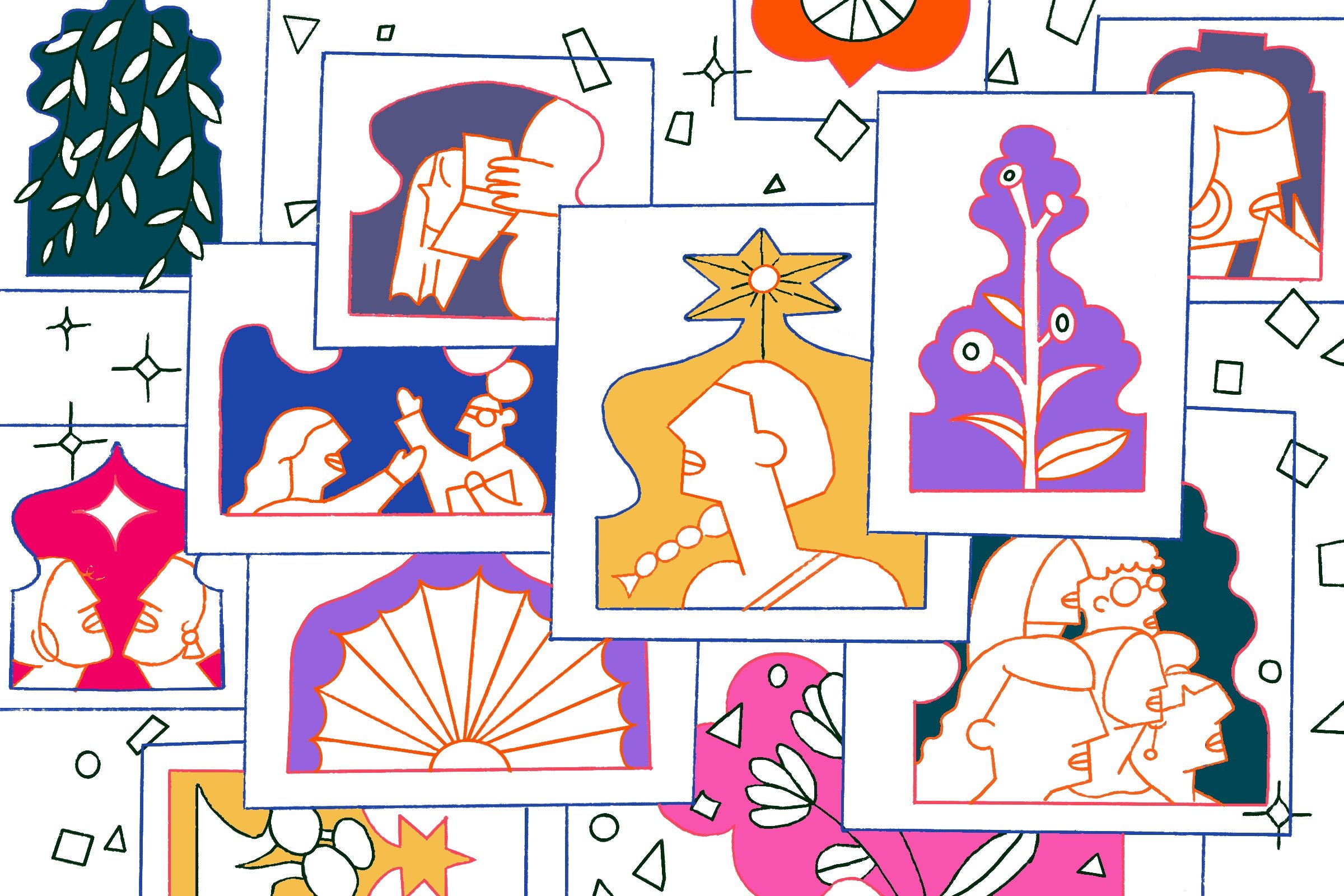Thousand&One: Behind the Name
To celebrate our very first anniversary, we thought we’d share the origins of our name, and how it has become a guiding principle in the work we do.
As you may already know, we, the founders of Thousand&One – Zahra and Hanieh, were born in Tehran, Iran. In 1998, our family immigrated to Toronto, Canada. As little girls, it was the stories, the myths, and the literature from our birthplace that kept us connected and rooted as we began to navigate different stages of our lives in our adopted country.
These cultural and regional narratives created for us a sense of belonging and community, shaping who we are to this day. This is where Thousand&One comes from.
Illustration by Liu Liu
The Woman who Told Stories to Survive
Let’s return for a moment to the origins of this influential and timeless tale and the importance of the Shahrzad figure, the woman whose survival rested on her storytelling.
The story goes something like this: Shahryar the king kills his wife after discovering she has been unfaithful to him. For revenge, he decides to make all women his victims. Every day he marries a new wife, and before she has the chance to dishonor him, he executes her.
“There’s more than just survival at play though. This tale is about womanhood and empowerment, taking control of the narrative, inviting themes of feminism and sisterhood, which are integral to our enterprise.”
Eventually, it’s Shahrzad’s turn to be the king’s new wife and victim. Every night, she tells a tale, making sure to keep the ending from the king. Evoked with curiosity, the king postpones her execution, and for one thousand and one nights, Sharhzad is able to stay alive through her stories.
There’s more than just survival at play though. This tale is about womanhood and empowerment, taking control of the narrative, inviting themes of feminism and sisterhood, which are integral to our enterprise.
Our Guiding Principles
To us, Shahrzad represents the power of stories and voices that are at the heart of our survival and resistance, guiding and inspiring our core principles of resilience, community, and intersectionality here at Thousand&One.
Resilience: One of the central themes that drew us to this tale and informed the name of our enterprise was the resilience displayed by Shahrzad. She uses her stories and her voice to ensure her survival. The story invites us to celebrate our own resilience in a world that was never designed for us. Here at Thousand&One, we insist on and are deliberate in raising our collective voices, making space for our narratives.
Community: Let’s not forget that it is Shahrzad’s sister who encourages her to tell stories, showing us the strength and power that resides in our sisterhood. One of our core principles at Thousand&One is to build community through a celebration of our shared sisterhood and experiences. It is about connecting with fellow women of colour, as we commit to building an inclusive and safe space that fosters equity and nurtures belonging for us all.
Intersectionality: Thousand and One Nights is by nature intersectional. We love that its origins are ambiguous. It belongs to us all and the themes and concepts cross borders and cultures. In fact, storytelling is a cross-cultural concept that brings us all together. Oral traditions are important to many of our backgrounds, integral to our survival and cultural continuity. Our name then is a testament to celebrating all of our stories.
“The ‘thousand’ is a celebration of our collective, and the ‘one’ a recognition and preservation of our individual stories and experiences as women of colour.”
Thousand&One is more than just a name. It is born out of our cultural heritage, connecting us and reminding us of our roots. The ‘thousand’ is a celebration of our collective, and the ‘one’ a recognition and preservation of our individual stories and experiences as women of colour. In claiming our community, and in taking up space as a whole, our name is always a reminder that our individual experiences should never be erased. It is about holding sacred our inspiration and commitment to our enterprise, to make sure that it’s not just ours, but yours too!
Coming up Next
As women of color, workplace experiences often leave us feeling traumatized. In next month’s blog, we’ll identify common biases that lead to us feeling marginalized and isolated, and how they show up in the workplace.


